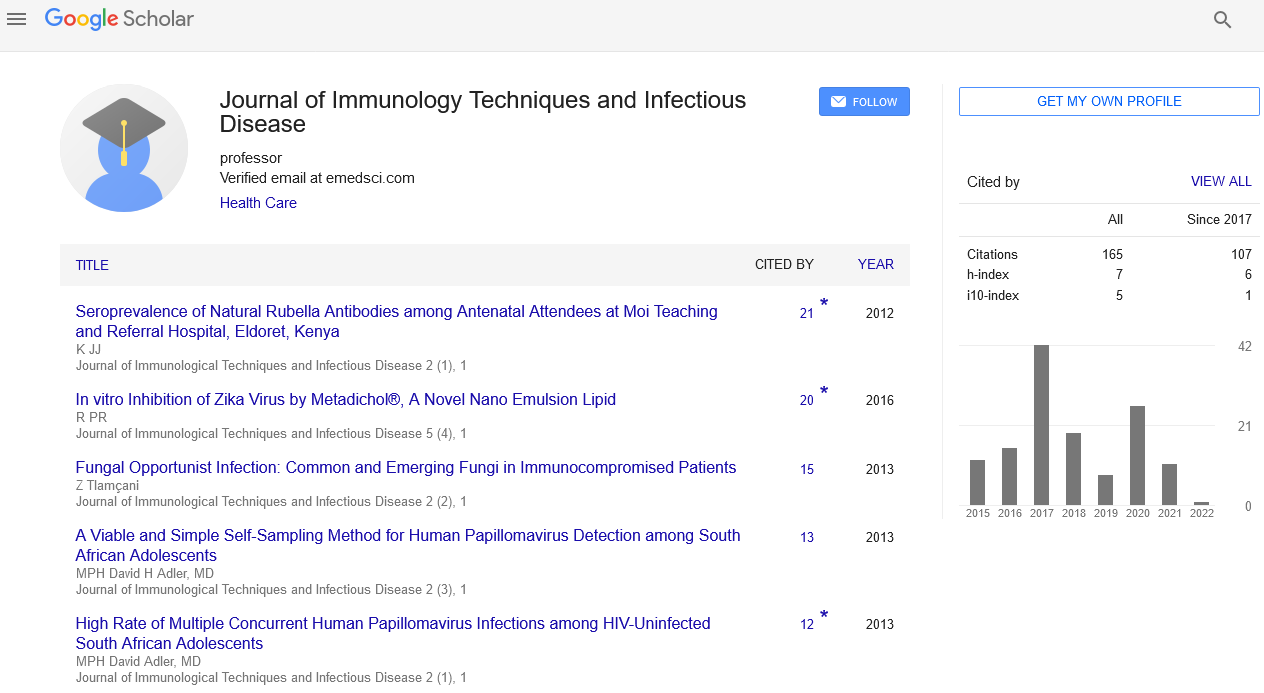Magnitude and determinants of physical activity in Ethiopia: Evidence from 2015 Ethiopia NCD national survey
Kassahun Amenu, Terefe Gelibo, Misrak Getnet, Tefera Tadele, Yoseph Mamo, Abebe Bekele, Theodros Getachew, Atkure Defar, Habtamu Teklie, Geremew Gonfa, Fasil Shiferaw, Girum Taye Mulugeta Guta, Yeweyenhareg Feleke, Alemayehu Bekele, Dejuma Yadeta, Tedla Kebede, Mussie G/ Michael, Feyissa Ch
Ethiopian Public Health Institute, Ethiopia
St Paul Hospital Millennium Medical College, Ethiopia
Addis Ababa University, Ethiopia
World Health Organization, Ethiopia
Ethiopian Public Health Association, Addis Ababa
: J Immunol Tech Infect Dis
Abstract
Background: Physical activity can significantly reduce NCDs burden with low-cost and high impact interventions. But global reports show that physical inactivity has remained a major pandemic problem with deteriorating patterns and, worse yet, given very little attention mainly in the developing nations. Globally, 20 percent of adult men and 27 percent of adult women did not meet the normal- recommendations of physical activity for health (WHO 2014). Methods: Community-based cross-sectional study using WHO NCD stepwise approach was conducted in the 9 regions and two city administrations; from April to June 2015 (n=9801, response rate 95.5%). The target population was all men and women age 15-69 years. A mix of sampling approach namely stratified, three-stage cluster sampling, simple random sampling and Kish method were employed to select the study settings and participants. Result: Descriptive statistics was used to estimate the magnitude and intensity of physical activity, while logistic regression models were used to assess the factors associated with it. Among the study participants, in general 94.2% of them did physical activity as per WHO recommendations (95% of male, and 91% of female). Based on multivariate analysis, rural residence was 2.5 (AOR=2.46, (95% CI: 2.12, 2.86)) times more likely to do physical activity as compared to their urban counterparts. The youngest age group 15-29 were 3.5 (AOR=3.46, (95% CI: 2.74, 4.36)) times more likely to be physically active than the oldest age group 60-69 years old. Participants who had college and above education were 28 percent (AOR=0.72, (95% CI: 0.55, 0.96)) less likely to do physical activity than those with no formal education. Conclusion: It showed that, individuals in rural areas were more exposed to physical activity; while individuals who had college and above education and older age group (60-69 years) were less likely to do physical activity.
 Spanish
Spanish  Chinese
Chinese  Russian
Russian  German
German  French
French  Japanese
Japanese  Portuguese
Portuguese  Hindi
Hindi 
